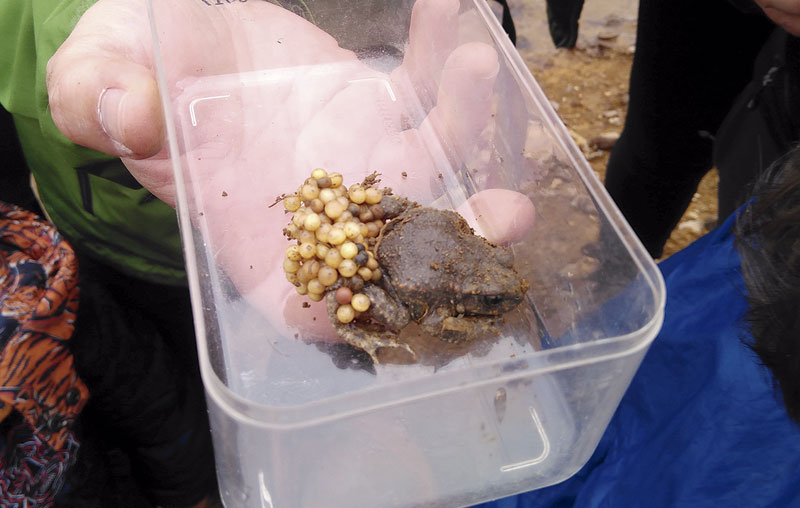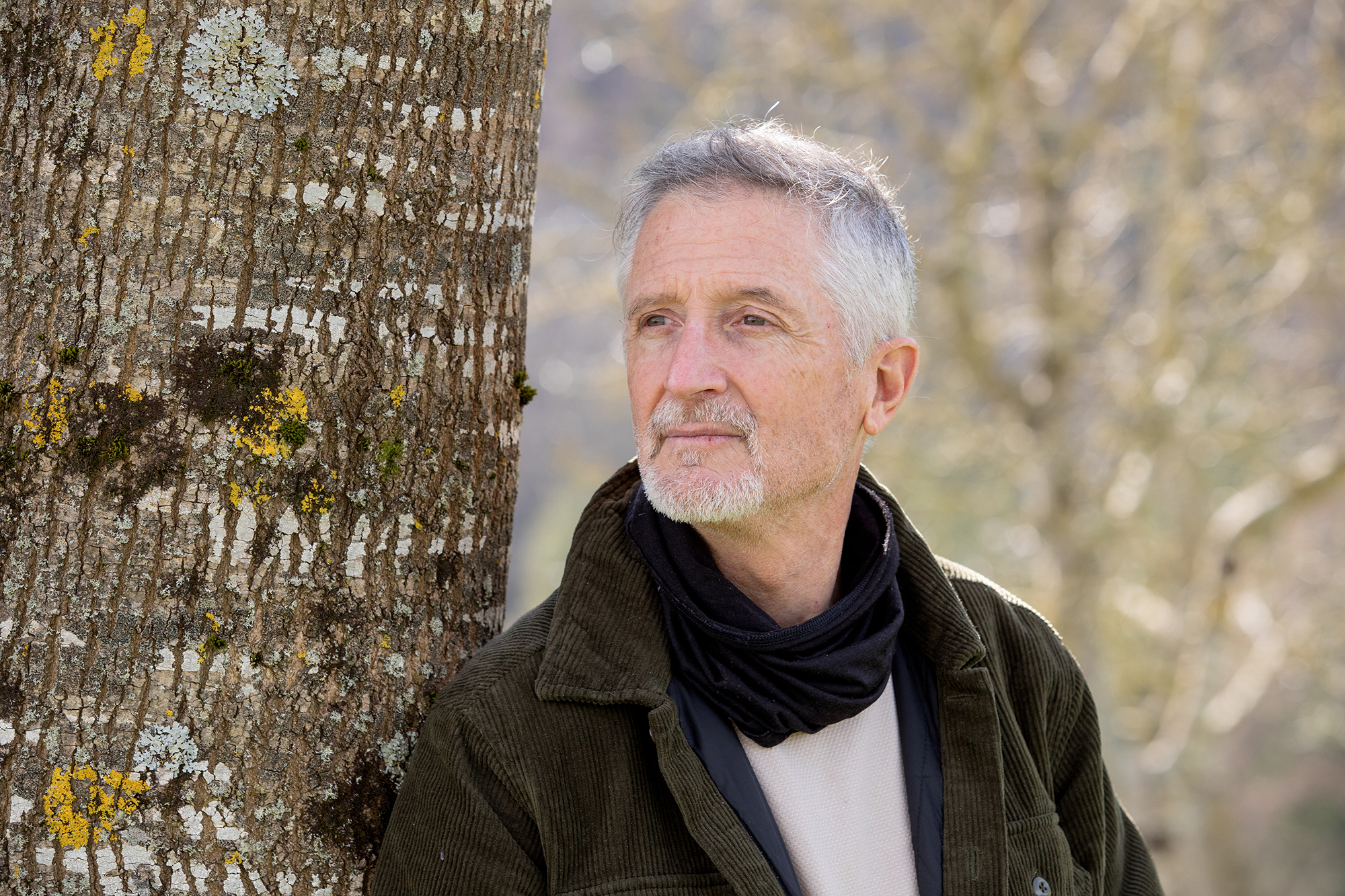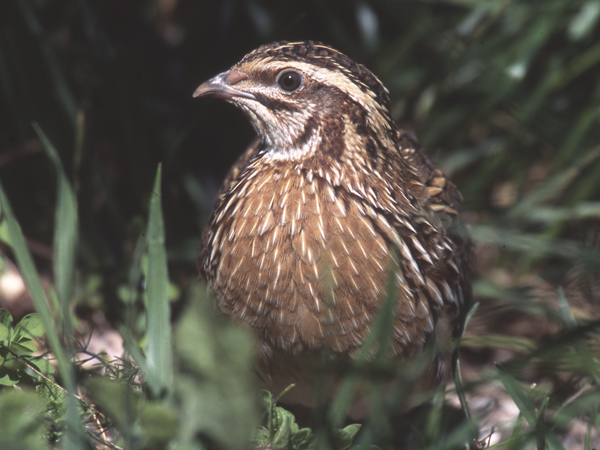Small indicators of major environmental changes
- We have them all around us, staring at them, even if we don't see them. We don't realize it, but amphibians and reptiles have a lot to tell about the environment, and thanks to them we can raise awareness and get to know. To this end, we visited the Leurtza reservoir area, on a guided tour organized by ARGIA magazine in collaboration with biologists of the Society of Aranzadi Sciences.

Where are they stored when the reptile is cold? Did you know that in Euskal Herria there are lizards without legs? Or that in a species of toad that lives in our environment are the males who take care of the fertilized eggs? Why do eggs have eye-catching colors? What is the triton that we will only find in the Pyrenean streams all over the world? These and many other questions were answered by three members of the Society of Sciences Aranzadi on May 18 in the area of the Leurtza reservoir, on a guided tour of morning and afternoon to get to know their amphibians and reptiles. This is a special initiative organised within the framework of the centenary of ARGIA.
To have a good time and learn we made a tour in the Parajeos between Urrotz and Beintza-Labaien. The toads and snakes, on the contrary, gave for more. Big conclusions can often be drawn from small questions; you just have to look at the close to give an explanation to many questions worldwide. The focus, therefore, is on the small animals around us and the head in the environment.
A JOURNEY FULL OF SURPRISES
The first surprise was given by ARGIA readers. The journal was asked to form a group of up to 35 people. In animal work it is necessary to fulfil a number of conditions, and for the sake of nature and people, it is important not to be in large groups. In a few hours, however, the group was already formed and we decided to form a group of another 35 in the afternoon. It was also instantly filled. A total of 70 people signed up in a few hours for the Leurtza route, a nice reflection of the interest that the tour aroused.
18 May. Rain up and down. And it's pretty cold. But those who had signed up did not lie down. Our heads would open wide open with their eyes disproportionately open, our words would be heard in awe and our hair would start to burn, and our parents would have a smile. How to fail with this team!

Ander Izagirre Egaña, Alberto Gosá and I, from the Department of Herpetology of the Aranzadi Society of Sciences, did the guiding tasks, and to start the day with force, we gave the first surprise to the attendees: In the 1980s it was Alberto Gosá himself who first discovered the Pyrenean triton (Calotriton asper) in Leurza. 30 years later, we were able to see that he was once again present. We found a puppy and an adult in the dreamy and grim river, at the foot of the swamp wall. But why the Pyrenean triton in Leurza? What is the similarity between the Pyrenean and the Leurtza rivers?
The Pyrenean triton lives in rocky, well-oxygenated, clean streams. It's an amphibian that keeps the tail when you're an adult. So for the experts, urodelo. Although the construction of the reservoir destroyed part of its place of residence, in areas where the river is kept there are still good conditions for survival. We took advantage of the Pyrenean Triton to talk to attendees about the conservation of streams and climate change. If the water temperature rises, will it keep the current populations of the Pyrenean triton? Or will it disappear? The question stayed in the air. The first reflections began...
FROM UHANDRA TO UHANDRA: BECAUSE NOT ALL ARE EQUAL
It wasn't the Pyrenean triton that we found with amphibian tail. We also had the opportunity to see the palatated triton (Lissotriton helveticus). But where can amphibians and reptiles be found on low-temperature days? Don't you need external heat to activate it? Most of the animals we find in Leurtza are found in the underside of stones and logs, sheltered. Spring is a time of abundance for many animals and are close to the water points to go to lay eggs, but if it is cold, better sheltered. Under the eyes of the little ones in the house, we teach how to collect and leave the hiding places of the animals, stones and logs, and that is a work of the experts. Every stone has its place, it fulfills its function in the middle. You also have to learn how to leave the stones as they were.

The Uhandre palmeated male develops a small ridge on the back during the period of the offspring; if some were astonished to hear it, it was easy to see how they opened their eyes when they found common affection (Alytes obstetricans). In fact, the oldest toad in Europe has something to tell: it carries the fertilized eggs hanging from its hind legs. To the astonishment of many of those in Leurtza, the male is also in charge of the eggs in this species, the caregiver. There were those who said that man (men) should take an example of it … because nature teaches us many times that not everything has to be looked at by the eyes of man. The environment is much more diverse.
Unfortunately, in addition to the smallness of affection, we also had to realize its weaknesses. This species, protected in Europe, has good populations in the Basque Country. There does not seem to be an obvious degree of threat to disappear at this time, but around us there are facts that give reason to think otherwise. Alberto Gosá set the example of Madrid. There, a fungus, which has had the opportunity to stay at home because of climate change, destroyed in a few weeks a whole population of cavities. It gets into the skin and kills the animal. This fungus has been found in our mountains and, therefore, we will have to look carefully at the future.
The participants in the guided route were explained that the group of vertebrates before them, the group of amphibians, is the most threatened in the world, and in recent years is suffering a clear global decline. The ability of these species to breathe through the surface makes the skin soft and easy to go through. Changes in the environment (herbicides, pesticides, pollution, climate change…) directly affect them. This also makes these small animals excellent bioindicators of our environment. If we want to moderate the health of our nature, we will have to look more often at amphibians. They are the first to feel change and, unfortunately, also the ones who will notice it.
From reality to legends: TOADS AND ROE
Apart from paroxysm, we saw more toads. The common toad (Bufo spinosus) also made its appearance. He was screwed into a hole in the ground, under the stone, and his vivid red eyes were looking at us. It was an excuse to talk about the migration of animals, their reproductive strategies, the differences between their two toads -- and their dark reputation. Who has never heard that the toads have poison or urinate in the eyes? Legends and beliefs of Basque and foreign culture have spread this type of beliefs...

Mentioning the legends, we saw the species that appeared to us at the end of the day: the common salamander (Salamandra salamandra), the amphibian related to fire, death and hell. Slowly, calmly, he walked safely, with his yellow color and his back in black stripes, road to the forest. It was a delightful moment.
And REPTILES? WHERE WERE THE LEURTZA REPTILES?
Seeing that the previous day was also rainy and cold, attendees were told that the hope of seeing the reptiles was small. However, also in the cloudy sky there are enough alarms to start the body, such as the legless lizard that we will find in Euskal Herria, the sirauna. What's that like? Is the mermaid (Anguis fragilis) not a snake type?
We're often confused by the likeness of the siruna body to snakes, but looking at it well, we found that it's an animal from the lizard group. Unlike snakes, the scales at the bottom are separated into more than one line and the eyelids are covered in the eyes. However, what is most striking to the reader is that, like lizards, they have the ability to unravel the tail. I mean, if you lose your tail, you can re-create the sirens, unlike the snakes.
Under the stones appeared the male, the female, the child… and we had the opportunity to differentiate them. In the same places we also find the lizards (Podarcis muralis). After explaining the difference they have with the other lizards in the Basque Country, we refer to the way they reproduce. In fact, we found little sugandillo eggs underneath the stones. If we do not want them to die, we must leave them alone and not touch them. They were placed in the sun, on the wet high stone. Not by chance, because the mural lizard knows very well where to lay the eggs that guarantee the future of their genes.
During the tour we had our eyes on a small scale. His ears were wide open, his brain was burning, and his thoughts were floating in the air. In those small animals that we've found, we were able to read words as big as climate change, the sustainable models and the biodiversity that we get around us often.

Eskola inguruko natur guneak aztertu dituzte Hernaniko Lehen Hezkuntzako bost ikastetxeetako ikasleek. Helburua, bikoitza: klima larrialdiari aurre egiteko eremu horiek identifikatu eta kontserbatzea batetik, eta hezkuntzarako erabiltzea, bestetik. Eskola bakoitzak natur eremu... [+]
Andeetako Altiplanoan, qocha deituriko aintzirak sortzen hasi dira inken antzinako teknikak erabilita, aldaketa klimatikoari eta sikateei aurre egiteko. Ura “erein eta uztatzea” esaten diote: ura lurrean infiltratzen da eta horrek bizia ekartzen dio inguruari. Peruko... [+]
Biologian doktorea, CESIC Zientzia Ikerketen Kontseilu Nagusiko ikerlaria eta Madrilgo Rey Juan Carlos unibertsitateko irakaslea, Fernando Valladares (Mar del Plata, 1965) klima aldaketa eta ingurumen gaietan Espainiako Estatuko ahots kritiko ezagunenetako bat da. Urteak... [+]
Nola azaldu 10-12 urteko ikasleei bioaniztasunaren galerak eta klima aldaketaren ondorioek duten larritasuna, “ez dago ezer egiterik” ideia alboratu eta planetaren alde elkarrekin zer egin dezakegun gogoetatzeko? Fernando Valladares biologoak hainbat gako eman dizkie... [+]























